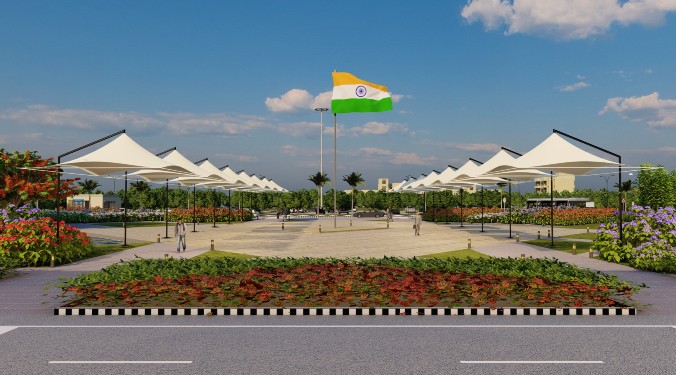“Once we get Karaikal Airport ready and functioning, all that I can say is that the sky is the limit,” says J.V. Chowdhury, Chairman, Super Airport Infrastructure Pvt. Ltd.
Super Airport Infrastructure has already made news to build the first-ever fully private airport in the country. The Coimbatore-based firm has obtained all necessary clearances from regulatory agencies. In the first phase, aircraft of the type of regional jets and Boeing 737 could land. Mr Chowdhury talks about their journey, their responsibility, their visions and their plans to be among the best.
Super Airport Infrastructure is going to give first-ever private airport in the country without the participation of local government and AAI. What are the next big surprises we can expect from Super Airport?At this point we are only concentrating to make sure that Karaikal Airport becomes a reality very soon. At this juncture I would like to emphasis that unfortunately in India raising funds for an infrastructure company trying to provide connectivity via small airports does not find favour with financial institutions. This attitude has set back our plans by a few years. Once we get Karaikal Airport ready and functioning, all that I can say is that the sky is the limit.
Among the 14 Greenfield airports approved by the ministry, yours is the only 100 per cent private airport. It is also a responsibility. How are you preparing to justify the responsibility?Yes I do agree that we have a great responsibility being a total private airport. We plan to use information technology to the utmost levels to ensure security. The design of the airport also ensures safety, but at the same time keeps CAPEX to the minimum.
Recently the government faced huge roadblocks to privatise Chennai and Kolkata airports. Do you think that it would affect the aviation industry? Airport Authority of India, which has been around for many decades, is quite capable of ensuring that Chennai and Kolkata airport be upgraded to international standards. However, at the same time, the authority must wake up to ensuring quality in maintenance and service.
It is expected that India’s aviation sector is going to become the 3rd largest in the world by 2020. What the industry should do to make it reality?In my opinion A320 and B737 cannot give the “Last Mile” connectivity in India. We need to convert the many landing strips available in the country to absolutely low-cost small airports, with 2C operating status. Today we have two classifications of airlines. First one allows pan India operations and the second is classified as regional airlines. A third category also can be classified as a pan India regional connectivity airline. The criteria would be that these airlines must have a minimum number of landings at 2C status low-cost airports, maximum usage of Tier-2 city airports and restricted access to metro airports. Such an airline would then have to operate turbo props only.
Super Airport Infrastructure also has an experience in operating overseas airports. How do you differentiate your experience between working in Indian airports and in overseas airports?Talking about Epinal Mirecourt Airport in France, Epinal can serve as a hub for any airline based out of India. Incidentally, Epinal has been allowed to receive carriers from India and also allows night landing, which means transfers in Epinal can happen at night. A person boarding in India in the evening will reach US by morning; a whole day will be ahead of the pax in the US. Incidentally, Epinal is within 4-hour bus journey to any major European cities.
Where would you put the Indian airports in the next 5 years?Airports and airlines together form the aviation industry. The aviation industry in turn is a constituent of the transportation industry, and India is a vast country with a huge market base.
Cookie Consent
We use cookies to personalize your experience. By continuing to visit this website you agree to our Terms & Conditions, Privacy Policy and Cookie Policy.









